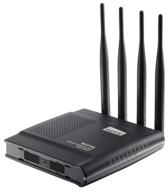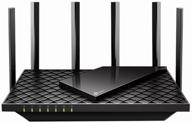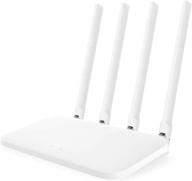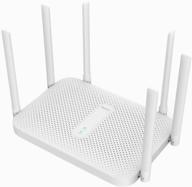
Review on 🔵 Google and TP-LINK's Blue Color OnHub Wireless Router by Shug Quinn

If you have tech skills, this is the WiFi hotspot for your home. If you don't have it, but just need WiFi, BUY IT!
I have been running my own technology company (Managed Service Provider) for over 15 years. We serve around 15% of our clients as resident clients (usually employees of our business clients) or they are domestic entrepreneurs. We are always asked which WiFi routers to use. In our view, the best solution is a wired router plus access point. The lifespan of a router is typically 2 to 3 times the lifespan of a good access point's radios. Also, if you're dealing with a large house (say, 3,000 square feet), it's a good idea to have more than one Access Point (AP) for really good Wi-Fi. So we're usually ambivalent about choosing a "WLAN router" in smaller households, as it rarely makes much of a difference. Google's OneHub solution is an interesting approach for home users who don't typically hire an IT company to set up and maintain a wireless connection. As an MSP, we NEVER use the CD or dumb app that comes with a WiFi router to set it up. We just connect his website and set it up. We configure the network address, WiFi SSIDs and passwords and check that the firmware is up to date. The OnHub setup is VERY different. The essence of this device is that it is AWESOME. If you need details, read on. I have an Android phone but I assume the IOS setup is the same. On this device, you can set it up through your phone. Okay, it's different and you just have to work with it. The device comes with a default SSID and password. You will need to enter it after downloading the application and proceed to "Set up WAP". The application doesn't allow you to do anything other than choose an SSID (wireless network name) and password. He then configures them and updates the firmware if necessary. Would you like to configure the SSID differently for 2.4 than for the 5G network? Don't buy this. But Apple doesn't make it easy for itself either. Usually why you want to make them different is because you are VERY tech savvy and don't have a device to make the choice easier. bottom line? Don't worry and let them have the same name! Then the most interesting begins. They have some interesting features that test the internet for WAP and WAP on your phone. It's basically eye candy. Oh how did you arrange that? You connect this device to a wired router. But what you didn't know. This device also acts as a router. Running at home ONLY with WiFi? Then this device is ideal as a WLAN router. Do you already have a router? Well, AFTER everything is set up via the phone app, you need to visit the Network and Settings section and change the operation to BRIDGE mode. This allows it to function like a normal access point. Can you configure its IP address? Not from the app! Should you care? Not at home. I suggest playing around with all the features and testing your speed before you're ready to switch to bridge mode. About 75% of the features and test functions are gone there. There is very little you can customize at this point. But speed? Murderer. Distance? Perfect. If it is stable now and stays that way for the next few years, it will be the product of 2017. Buy it!
- Helps to eliminate dead spots with 2.4GHz and 5GHz 1/2/3/4-13 Wi-Fi antennas, 2.4GHz-1 Bluetooth antenna and 2.4GHz-1 Zigbee antenna. Reliable coverage for most homes up to 2,500 square feet
- Cable shorter than others
New products
Comments (0)
Top products in 📶 Wifi Routers
Another interesting products
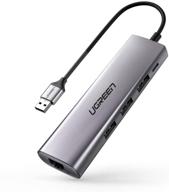
UGREEN USB 3.0 Ethernet Adapter Hub with RJ45: Fast Gigabit Ethernet Converter, 3 Ports USB 3.0 Hub Compatible for MacBook, iMac, Surface Pro, Chromebook, Laptop, PC

11 Review
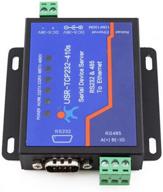
🔌 USR-TCP232-410s: RS232/RS485 Serial to Ethernet Adapter/IP Device Server with DHCP/DNS Support

4 Review
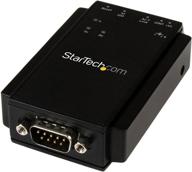
🔌 StarTech.com NETRS232 Serial to IP Ethernet Device Server - DIN Rail Mountable - Serial Device Server - Serial Over IP Device Server (Black)

4 Review
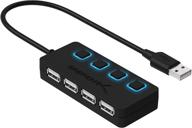
HB-UMLS Sabrent USB 2.0 Hub with 4 Ports and LED Power Switches for Each Port

12 Review


